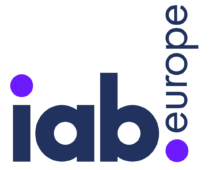Quantcast's Jag Duggal and David Grant Discuss Why Underlying Problems In Current Attribution Modelling Is Impeding True Potential Of Digital Display
by Ciaran O'Kane on 2nd May 2013 in News


Jag Duggal, Senior Vice-President, Product Management and David Grant, Principal Product Manager at Quantcast discuss the attribution problem in display, and how the industry might address some of the underlying issues with the current methodologies.
You recently spoke how attribution needs to be addressed - and fixed - before we see significant shifts on spend into digital display. Can you expand on that point?
We’ve seen explosive growth in RTB over the last 3 years. However, for that growth to continue advertisers and agencies need to be convinced that their spend is driving real results. They have to trust that the attribution scheme is a reasonable proxy for the path to conversion. The current approaches of last click and last view attribution are so demonstrably flawed that advertisers are too often skeptical of the results. We recently had a client complain that our results were too good! He simply didn’t believe what his own ad server using his own preferred scheme (last view) was telling him. That scenario would not happen in Search. In Search, the path to conversion is trusted.
Last touch attribution has the advantage of being simple but in an RTB world that is dangerously simplistic. It incents an overuse of retargeting. We’ve all experienced a visit to an ecommerce site that yields more than 20 ads for that advertiser served over the course of the next 5 to 10 minutes! Many of those ads will be cheap placements, often unlikely to be viewed by the user. This is a gaming of the attribution system rather than a focus on driving actual (new) customers. This must be fixed for the good of the whole industry.
Are you looking for an industry standard to be introduced? How could that be implemented?
Quantcast would certainly love to see the industry adopt an attribution methodology better aligned with causation and more representative of the customer’s actual path to conversion.
Implementation is a more complicated question though. Industry standards emerge as much through bottoms-up adoption as top-down implementation. Ultimately, Advertisers and their Agency representatives should be the driving force behind the discovery and adoption of effective attribution models. No one is more motivated to figure out what’s really working than the client footing the bill.
Advertisers and Agencies should ask a simple question: Does the attribution scheme I currently use lend itself to being gamed? Does it incentivize the easy tactic of retargeting at the expense of the hard work of prospecting – of actually finding new customers. If so, is there a simple, transparent attribution approach that will fix these challenges? How you score the game will determine how it’s played – it is the single biggest lever an Advertiser or Agency has to drive performance.
We, at Quantcast, have been leveraging our Big Data infrastructure to develop an attribution proposal – our advertiser and agency clients who have tried it have found it to be extremely useful. But ours is one approach and we’re happy to collaborate with any and all players in the industry.
Do you think this will be a difficult process given how many bespoke approaches are available on the market? Shouldn't advertisers have unique models on a per client basis?
The various bespoke approaches are a crucial part of the discovery and innovation process. Again, advertisers and agencies will be the driving force here. We look at Search and Google Analytics as a pretty good model. Across advertisers, product types and verticals the same metrics are used. The expected values may vary but the entire industry runs on the same, simple to understand framework.
We’d suggest some caution – ensure that the bespoke approaches leveraging “Big Data” do three things:
1. Measure every touch – A few of these attribution systems measure only the last 10 touches.
2. Get correlation vs. causation right – If the bespoke attribution scheme suggests that you should do even more retargeting , its confusing correlation with causation.
3. Remains simple & understandable – If the Agency or Advertiser doesn’t understand why the attribution scheme is scoring things a certain way they can’t be on the look out for the gaming which I’ve referred to
What would a standardised model look like? You mentioned a 2 touch approach before the actual conversion? Can you explain how that will work?
As both a measurement and advertising company, Quantcast sees both sides of the attribution challenge. A few key points have emerged through our work with clients on attribution:
- Display clickers aren’t converters – ample evidence has long made clear most users don’t click most display ads. This is consistent with findings from Nielsen, Comscore, Facebook and every other credible source who have studied this issue
- Site Visitation is a common, crucial, and often ignored event in the conversion path – most users visit a Marketer’s first before making a purchase. It marks the transition point from the hard work of prospecting to the more straightforward work of retargeting
Based on these three insights, Quantcast has been developing an attribution methodology that better aligns delivery with causation, which we call ‘View Before Visit’. This methodology gives credit for each conversion to two touches – the last impression before the initial site visit as well as the traditional last impression before conversion. This setup treats the Prospecting phase and the Retargeting phase separately thereby:
- Preventing Retargeting from taking credit away from Prospecting, which is, after all, the more challenging task
- Holding Prospecting accountable – Prospecting gets credit only for eventual conversions rather than simply driving users to the homepage
The Advertiser or Agency controls how to split the credit between Prospecting and Retargeting – if they think that the two phases are equally valuable they can decide on a 50/50 split. If they think that Prospecting is more valuable they can make the split 80/20.
This approach has the advantage of being simple to understand. This small, transparent change removes the incentive to over-rely on retargeting and game attribution. Separating these two distinct phases, and explicitly acknowledging the role that both play in driving conversions, allows Marketers to better optimize delivery over existing, simplistic methodologies such as last or first view.
Do you think publishers are not fairly rewarded for the part they play in the value chain with the current attribution models?
Probably yes. Almost all attribution systems today reward quantity over quality. This has led to a proliferation of supply, and a bias against quality, particularly quality of engagement and interaction. Quality metrics like Viewability and related data will play an increasing role over time in attribution, if the technical challenges of accurately measuring these metrics can be worked out.
Is it possible only a couple of companies can really introduce a truly universal attribution model - like Google and Facebook?
Not necessarily, but large AdTech companies like Google or Facebook could certainly help to accelerate the process. Ultimately, better attribution will help the entire ecosystem, not just one publisher or vendor, as Advertisers will see better ROI and thereby increase spend over time. Google owns both Google Analytics and the Doubleclick platforms. Facebook now controls Atlas. Either or both could do a huge service to the industry by focusing on attribution and looking for simple, transparent approaches that address the current shortcomings. We’d certainly be willing to work with them to address these issues.
How does the market initiate this process? What steps should you take to start implementing a full blown attribution project?
The first step is an understanding and acknowledgement that this is a key issue, arguably THE key issue in the industry. There are a number of dedicated attribution companies – the one that cracks this central issue will create a huge amount of value for the industry and, no doubt, differentiate themselves from their peers. There are also the major ad servers whose clients desperately need a better solution than the antiquated approaches currently on offer. The IAB has done a great job of bringing Viewability to the front burner in a thorough but also judicious way – they could do a similar job around attribution. All players in the Display industry have a common incentive to solve this problem so we welcome any and all paths to a solution. In the absence of another solution, in the short-term, we’re focused on continuing to offer our free, simple approach to our advertiser and agency partners.
How important is it to be capturing all touchpoints - regardless of whether the touch point led to a conversion?
It is crucial. Let’s look at a simple way that only looking at a subset of impressions can lead to attribution gaming. A few attribution systems measure only the last 10 touches. Some vendors now serve 10 Retargeting ads just in the handful minutes after the site visit, crowding out any upper funnel prospecting ads shown to actually drive the visit in the first place! Again, Retargeting gets all the credit even though Prospecting has done majority of the hard work.
Where do you sit on the Causality vs Correlation debate?
We don’t believe there should be a debate. Differentiating between correlation and causation is a classic challenge in statistics. That said, this issue is at the core of attribution – mistaking correlation for causation will give the appearance of progress, as budgets are shifted between seemingly effective tactics, only to find that the number of customers the client sees come through the front door is flat, or worse, declining.
And that’s what it’s really about – all advertisers want the same thing, customers. The key challenge for any attribution vendor is to make sure their approach, no matter how apparently sophisticated, avoids this trap. A simple test that any Advertiser or Agency can conduct: Does the attribution scheme suggest doing more Retargeting than a last view attribution approach. If so, you’re into correlation confusion – you’re crediting the rooster for the sunrise.








Follow ExchangeWire